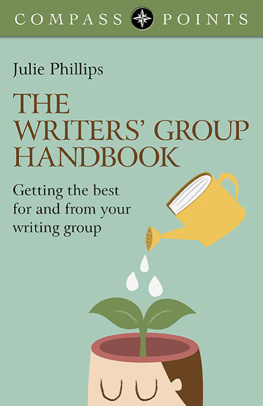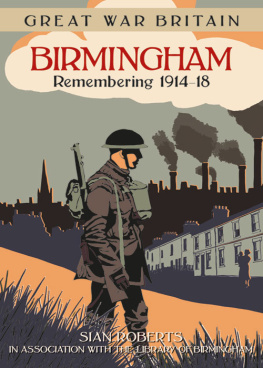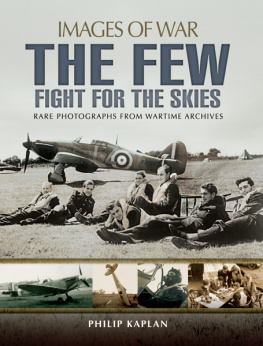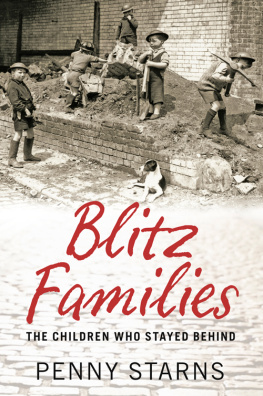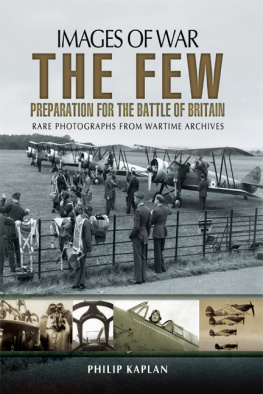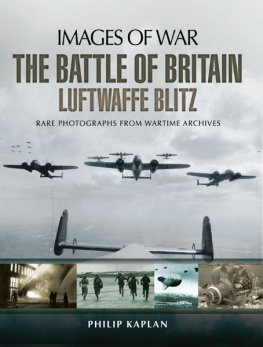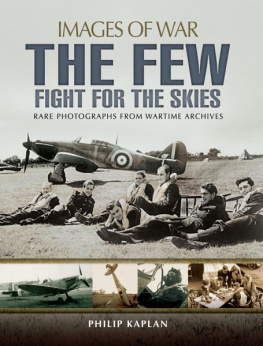BIRMINGHAM AT WAR 193945
Your Towns & Cities in World War Two
BIRMINGHAM AT WAR 193945
JULIE PHILLIPS
First published in Great Britain in 2018 by
PEN & SWORD MILITARY
An imprint of
Pen & Sword Books Ltd
47 Church Street
Barnsley
South Yorkshire S70 2AS
Copyright Julie Phillips 2018
ISBN 978 1 47386 697 3
eISBN 978 1 47386 699 7
Mobi ISBN 978 1 47386 698 0
The right of Julie Phillips to be identified as Author of this work has been asserted by her in accordance with the Copyright, Designs and Patents Act 1988.
A CIP catalogue record for this book is available from the British Library.
All rights reserved. No part of this book may be reproduced or transmitted in any form or by any means, electronic or mechanical including photocopying, recording or by any information storage and retrieval system, without permission from the Publisher in writing.
Pen & Sword Books Limited incorporates the Imprints of
Atlas, Archaeology, Aviation, Discovery, Family History, Fiction,
History, Maritime, Military, Military Classics, Politics, Select,
Transport, True Crime, Air World, Frontline Publishing, Leo Cooper,
Remember When, Seaforth Publishing, The Praetorian Press,
Wharncliffe Local History, Wharncliffe Transport, Wharncliffe True
Crime and White Owl.
For a complete list of Pen & Sword titles please contact
PEN & SWORD BOOKS LIMITED
47 Church Street, Barnsley, South Yorkshire, S70 2AS, England
E-mail:
Website: www.pen-and-sword.co.uk
Acknowledgements
I am indebted to, and full of gratitude and admiration for, so many people who generously gave their time, memories and experience in the making of this book:
Caroline Bagnall
Birmingham Air-Raids Remembrance Association (BARRA)
Birmingham Archives the Wolfson Centre
Birmingham City Council
Birmingham City Council Film and Television Office
Birmingham Mail
Birmingham Memories/Facebook Group
Birmingham History and Other Stuff/Facebook Group
Birmingham in Photos, Now and Then/Facebook Group
Birmingham Post
Michael and Sheila Brightlee
Cadbury Archive, Mondelez International
David Edwards
Jacqui Fielding and family
Sarah Foden and Jackie Jones, Cadbury Archive, Mondelez International
Ann Hodgetts
Eileen Housman and family
Keith Iddes and family
London RAF Museum
Toby Neal
Bob Parish
Douglas and Eileen Perry and family
David Phillips
Victor de Quincey and family
The Royal Orthopaedic Hospital, Birmingham, NHS Trust Archive
Jackie Sayle and family
Radio Shropshire
Don Smith and family
Shropshire Star
Moira Taylor and family
Fran Tracey and family
Wartime Birmingham and the Blitz/Facebook Group
Lorna Webb and family
Every effort has been made to ensure that image captions and copyright/permissions are correct. If there are any errors or oversights, please contact the publisher so that they may be rectified.
Dedication
This book is dedicated to the many people who gave their time and memories for this book and to the brave and determined people of Birmingham who saw the city through the dark years of the Second World War and helped in its recovery.
Introduction
Barely seventeen years after the long and treacherous Great War of 19141918, Birmingham was once more being forced to take part in yet another world war. The Great War had been labelled the war to end all wars, with significant efforts upon the part of the League of Nations to prevent such a world crisis from ever happening again falling apart with the invasion of Poland by Germany in 1935.
It must have been a scene of dj vu , with many in the city having not yet forgotten the horror and hardship that the First World War had cruelly bestowed upon them. Despite the recession and continuing hardship felt by Birmingham and many other towns and cities across the country, once more the people of Birmingham, from the ordinary working class to those in power and more affluent, were prepared to do what they could to help Britain triumph over Hitler. They were not going to merely stand by and let Germany trample over their freedom and way of life.
The contribution of Birmingham to the Second World War was vast, as was the damage it sustained through the battering of the Blitz. It is far beyond the scope of this book to highlight every single event, heroics and contribution that its citizens and community had to undertake to make the war a little easier for all concerned. This book, therefore, gives a snapshot of the period, examining the contribution of its workforce, its community and the powers that be.
CHAPTER ONE
A Brief History of Birmingham
Birmingham has always been a strategic and important place in the British Isles. It was first referred to in the Domesday Book , 1086, as a farming community, a poor relation to the more affluent areas of nearby Kings Norton and Aston. The area started off relatively small with around 100 inhabitants. The origins of how the name Birmingham came to be is subject to some disagreement but Bermingeham, as it was spelled in the Domesday Book, is a combination of words from the Anglo-Saxon: Brem/Beorma (a persons name), ingas (meaning descendants) and ham (meaning home).
There is evidence of a settlement from around 3,000 years ago by way of burnt mounds that are believed to be where cooking took place, or possibly the sites of saunas. It wasnt until the Romans came in 43AD that the first main roads were built, along with a major fort near Edgbaston. Then came the German settlers.
The settlements remained small and it wasnt until 1166 when the king granted Peter de Birmingham, the lord of the manor, permission to hold a market that we see the tremendous growth of the city begin. What made it an excellent site for trade was the position of the River Rea and a suitable crossing. Traders first came from across the borders in Wales to sell their sheep and cattle.
It wasnt long before several local industries and trades developed. With the coming of the cattle a whole industry based on leather evolved. As transport and trade links were strengthened, Birmingham saw raw materials, such as iron and coal, brought in alongside clay for the potteries. The river was also invaluable in that it provided the resources for washing and dyeing cloth.
Birmingham was becoming a boomtown and by the 1300s it was the third largest town in the county of Warwickshire behind only Warwick and Coventry. From its lowly beginnings, its trade and industry had seen its inhabitants swell to around 1,000. Birmingham also had its own particular dialect, resulting in its people being affectionately known as Brummies but woe betide the well-meaning tourist who mistakes other dialects from the Black Country or West Midlands as Brummie.


